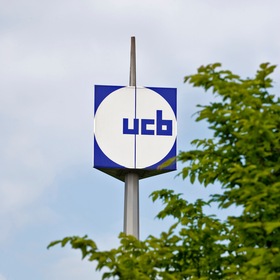New research links Restless Legs Syndrome (RLS) to cardiovascular disease
For the attention of accredited medical writers only
Brussels (Belgium), 15th April 2011, 0700 CET – Results from a two-year retrospective cohort study presented at the 63rd Annual Meeting of the American Academy of Neurology (AAN), Hawaii, U.S., showed that patients were significantly more likely to develop cardiovascular (CV) conditions, including hypertension, cardiac dysrhythmias and chronic ischemic heart diseases after an initial diagnosis of RLS, as compared to controls without RLS.1
“These findings suggest a significant association between a diagnosis of RLS and subsequent records of major cardiovascular conditions, and build on previous evidence suggesting that RLS may be a risk factor for cardiovascular disease. The findings confirm the need for early diagnosis of RLS so that patients can be monitored for subsequent development of serious cardiovascular events,” commented study author, Dr. Florent Richy, Head of Global Epidemiology, UCB and Adjunct Professor of Epidemiology at the University of Liege, Belgium.
The two year retrospective cohort study matched the U.S. medical records of 3,485 RLS patients to those of 3,485 patients without RLS. Mean age was 55 years and female/male ratio was 2.34. The study investigated the risk of major CV risk events among patients diagnosed with RLS. The most frequent CV diagnoses observed were hypertension (48%), cardiac dysrhythmias (9.3%), chronic ischemic heart diseases (8.5%), occlusion and stenosis of cerebral arteries (2.81%), cardiomegaly (2.50%), and hypertensive heart disease (2.43%).1
During this two-year observation period, RLS patients had a 12% greater risk of developing any CV event compared to patients without RLS (p<0.01). The relative risk (95% CI) for CV events by category were, in decreasing order: other forms (non-ischemic) of cardiovascular diseases, 1.33 (1.20; 1.47); cerebrovascular diseases, 1.31 (1.12; 1.53); disease of the pulmonary circulation, 1.28 (0.86; 1.92); ischemic heart diseases, 1.20 (1.06- 1.35); diseases of the arteries, 1.19 (1.01; 1.43); and hypertension, 0.99 (0.84; 1.03).1
About the study
This two-year matched retrospective cohort study was performed on a dataset from a U.S. claims database* containing longitudinal records on demographics, diagnoses, procedures, providers, prescriptions and claims. RLS patients were matched by age, gender and co-morbidities (including hypertension) to patients without RLS. CV diagnoses were recorded for a two-year observation period.
* Data Source: IMS LifeLink: Health Plan Claims Database , PharMetrics, Inc., a unit of IMS Health, Watertown, WA. ©2009, All Rights Reserved.
The IMS LifeLink Health Plan Claims Database includes longitudinal, integrated, patient-level medical and pharmaceutical claims comprising five billion patient observations from across the United States comprised of over 70 million patients from over 100 health plans, including medical services and prescription drug information across the entire continuum of care.
Notes to Editors
About Restless Legs Syndrome2,3
Restless Legs Syndrome (RLS) is a neurological disorder characterized by unpleasant sensations in the legs and an uncontrollable urge to move when at rest in order to relieve these feelings. It effects between 3 and 10% of the population to some extent. Most people with RLS have difficulty falling asleep and staying asleep. Left untreated the condition causes exhaustion and daytime fatigue. Many people with RLS report that their job, personal relations and activities of daily living are strongly affected as a result of their exhaustion. They are often unable to concentrate, have impaired memory, or fail to accomplish daily tasks. Most than 80% of people with RLS also experience a more common condition known as periodic limb movement disorder (PLMD).
References
1. Richy F, Makaroff L, Pietri G, et al. Restless Legs Syndrome (RLS) and Subsequent Cardiovascular (CV) Risk in a US Observational Setting. Presented at the 63rd Annual Meeting of the American Academy of Neurology, 9-16 April 2011, Hawaii, U.S.
2 National Institute of Neurological Disorders and Stroke website - http://www.ninds.nih.gov/disorders/restless_legs/detail_restless_legs.htm (accessed February 23rd 2011)
3 Trenkwalder C, Paulus W, Walters AS. The restless legs syndrome. Lancet Neurol 2005; 4: 465
For further information
Nancy Nackaerts, External Communications, UCB
T +32.473.864.414, nancy.nackaerts@ucb.com
Eimear O'Brien, Associate Director, Global CNS Communications, UCB
T +32.2.559.9271, eimear.obrien@ucb.com
Onsite at Congress
Andrea Levin, Senior Manager, Communications & PR, U.S.
T +770.970.8352, andrea.levin@ucb.com
About UCB
UCB, Brussels, Belgium (www.ucb.com) is a global biopharmaceutical company focused on the discovery and development of innovative medicines and solutions to transform the lives of people living with severe diseases of the immune system or of the central nervous system. With more than 8 500 people in about 40 countries, the company generated revenue of EUR 3.2 billion in 2010. UCB is listed on Euronext Brussels (symbol: UCB).
Forward looking statement
This press release contains forward-looking statements based on current plans, estimates and beliefs of management. Such statements are subject to risks and uncertainties that may cause actual results to be materially different from those that may be implied by such forward-looking statements contained in this press release. Important factors that could result in such differences include: changes in general economic, business and competitive conditions, effects of future judicial decisions, changes in regulation, exchange rate fluctuations and hiring and retention of its employees.
Asset Download
Stay up-to-date on the latest news and information from UCB

